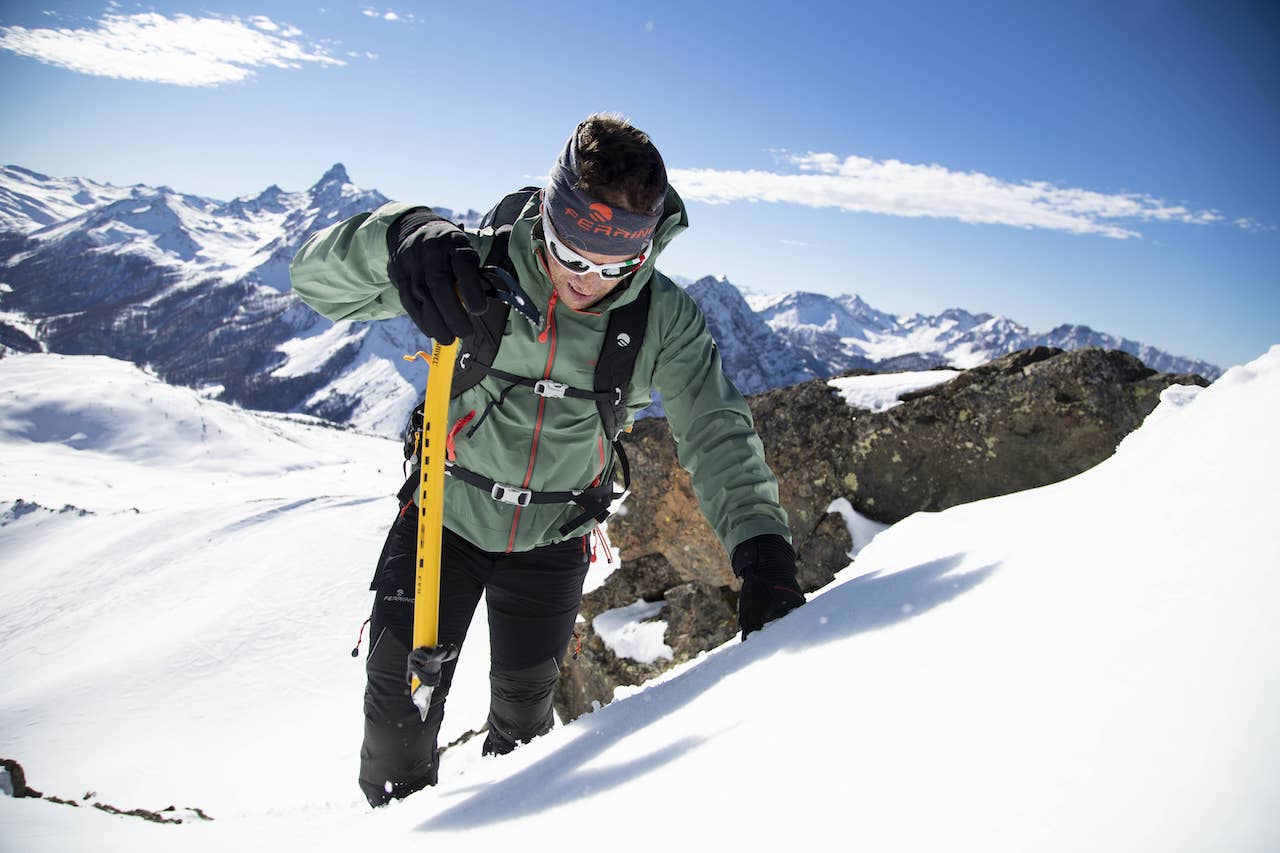With: Ferrino
ITW:Andrea Lanfri
By: Ilaria Chiavacci

Andrea Lanfri to conquer Everest
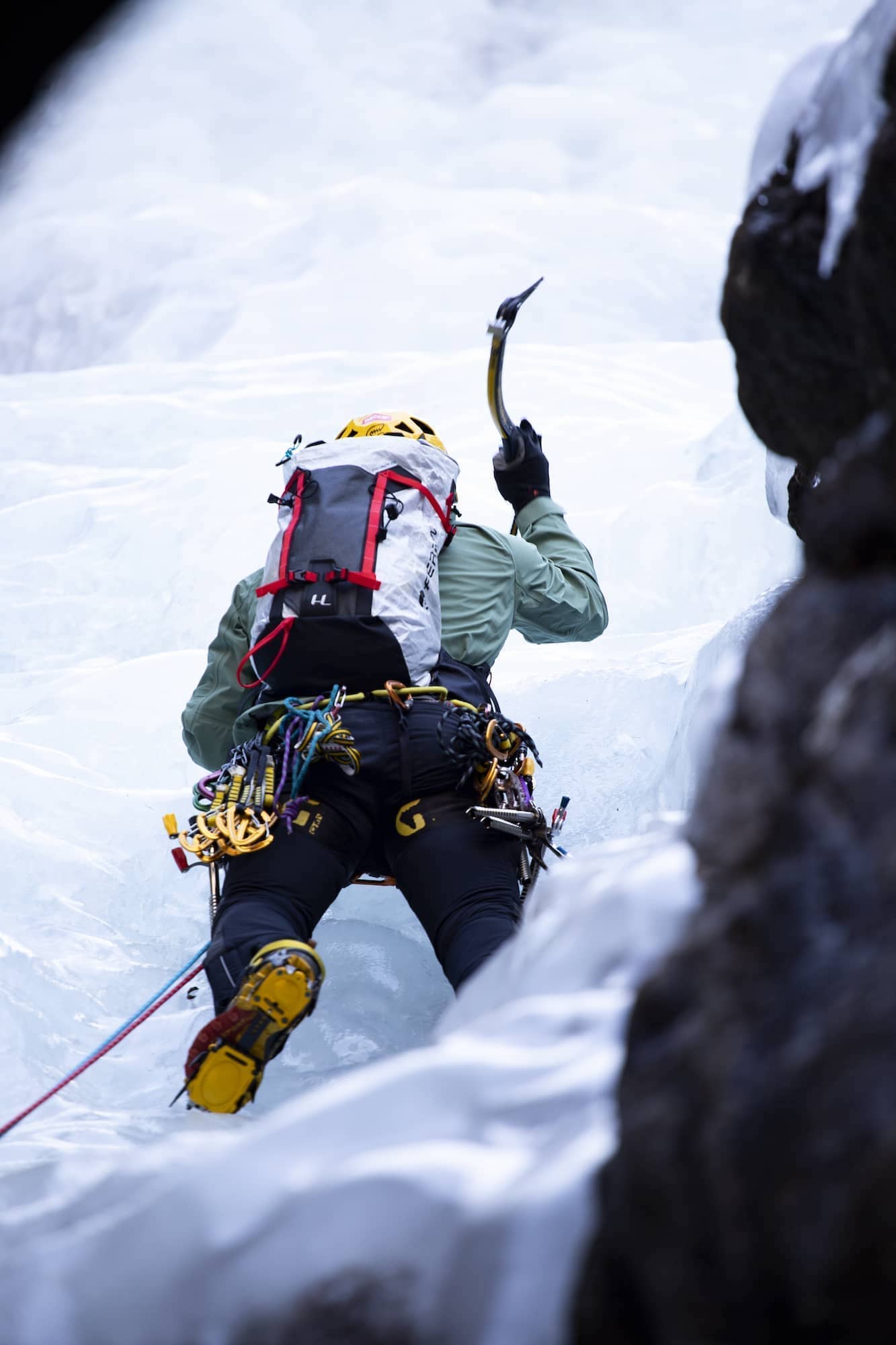
A rather aggressive meningitis took away both his legs and seven fingers out of 10, just a step away from the age of thirty, but the call of the mountain has been stronger and now Andrea, who is 36 years old, is ready to face Everest.
Andrea Lanfri, paralympic athlete and ambassador Ferrino, aims to the highest peak on the planet. He will leave Italy on the 23th of March flying in Nepal to try to conquer Everest. It is the first time that an Italian multi-amputee athlete attempts a climb above 8000 meters. He will climb with his friend and mountain guide Luca Montanari and the goal is the ascent without oxygen.

Having to live with a malformation, with a body different from other people, a body that has to strive three times as much to do what most people do without even thinking about it, is difficult. It is even more difficult if you find yourself in this condition out of nowhere at the age of 29. In fact, at 29, in the fulness of his strength, Andrea Lanfri, a Ferrino’s ambassador, lost both legs and most of his fingers due to a meningitis with meningococcal sepsis. What may appear to most people as shocking news did not move Andrea from his passion: he has always been crazy about mountaineering and never thought about giving up, not even for a second.
“I really don’t know how to explain it, but as soon as I woke up after the various amputations of my feet and most of the fingers, inside me there was this crazy belief that, for better or for worse, I would go back being the “Andrea” I was before. I immediately saw this situation as a challenge, a great challenge, up o date the most demanding that I have faced, but in the end I won it. Indeed, I went further: in that hospital bed I vowed to continue doing the things I did before, today I can say that I was very wrong because today I do many more.”
With “many more than before” Andrea refers to having reached Punta Hiunchiuli on Mount Everest and having climbed the Chimborazo Volcano in Ecuador, just to name a few.
Ilaria Chiavacci asked him some questions.
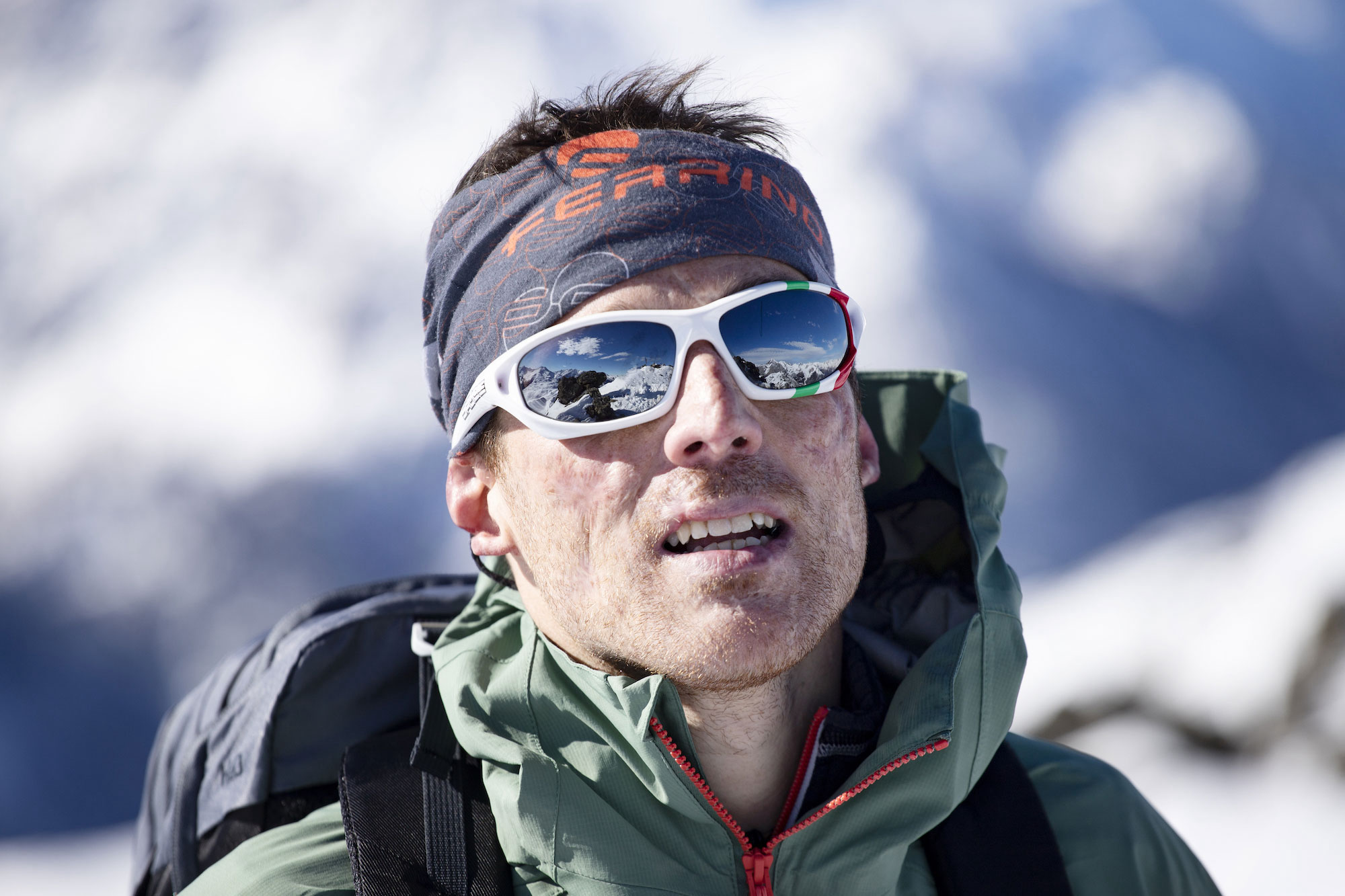
Your bio says: “Limits are only in your head.” Is there one that you still haven’t been able to overcome?
I believe that the desire to constantly improve is part of the nature of all athletes, every limit is seen as a challenge and preparing to win it automatically moves that limit further. As soon as I put the first prostheses on I tried to climb but immediately failed and decided to put climbing in standby, then my stubbornness pushed me to keep trying again and again, until I found solutions. It was ambition, this assiduous desire, that opened my mind to new ideas, new settings of my body that, up to date, have led me to think about climbing very high mountains. I believe that for a person like me, who finds himself facing a “hitch” in his life path, ambition, determination and knowing how to dream are three fundamental requirements. Mountains and mountaineering have come back overwhelmingly in my life because I have really dreamed about them. But you also must be very resolute: when I returned home and started exploring my home mountains with my new feet, I found that everything was so difficult, even those routes that I previously classified as very easy.
You got your first prostheses through a crowdfunding campaign, these tools can give a very high quality of life, but they are also very expensive…
Unfortunately, even normal maintenance, especially if, like me, you use use them a lot, is very expensive. In fact, many of my prostheses are made from old ones: now worn for one purpose, but still valid for others. For example, cycling prostheses were born from an old pair that I used for walking. I have several models for mountaineering, trekking, cycling, road running, climbing (also these made from various pieces of my old prostheses) and finally the “civil” ones, that I use every day to go around and to work. To optimize movements and athletic gestures, each sport has its own particularity and requires a specific prosthesis.
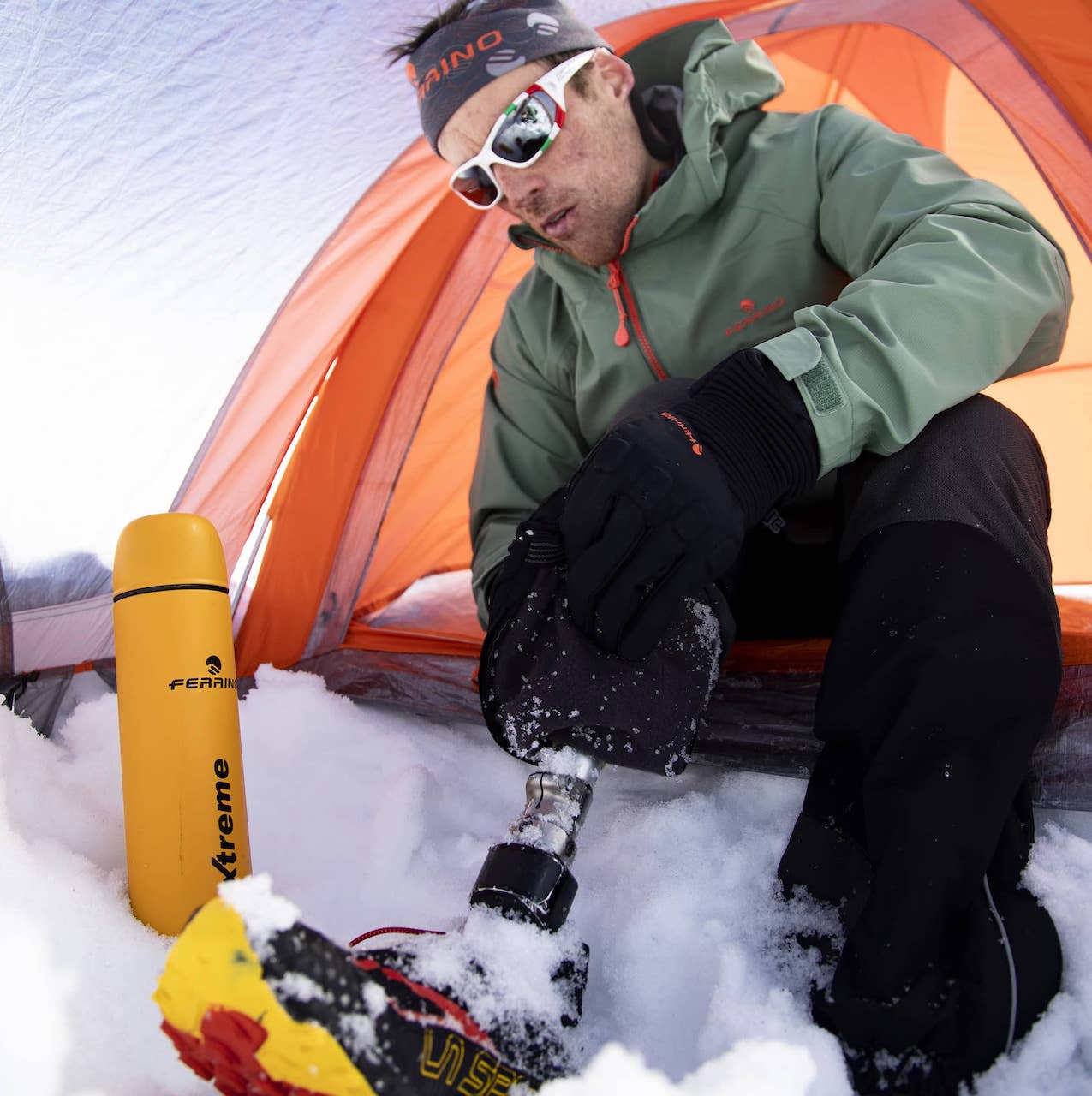
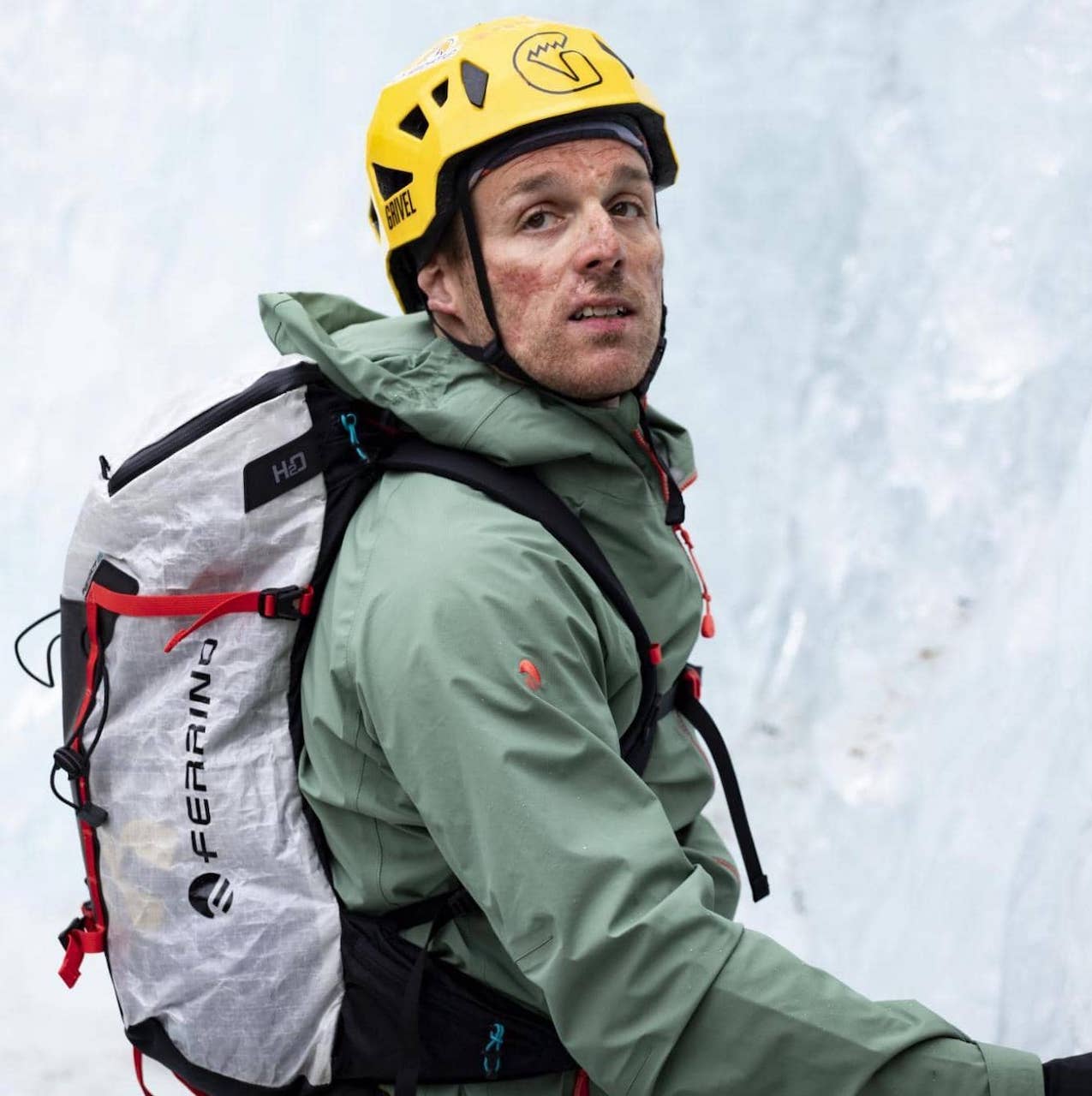
On your right wrist you have tattooed the date when this all started.
There is a line interrupted by this dark date, but then the line continues and intensifies more than before, to show that life has continued. But I’ve got many other tattoos that, on the other hand, do not have a particular meaning, they practically revolve around the various scars that I have scattered around my body.
How do you choose your adventures? What pushes you to choose a peak rather than another one?
Sometimes while climbing I think about other peaks, other times the inspiration comes just when I am at home, like during the first lockdown when I gave birth to “from0to0″, the project in which I started cycling from the level of the sea, in Lerici, and then reached and climbed Mount Pisanino and went back to zero altitude again in Lerici.
You will soon leave again for Everest, what led you to choose this challenge?
The summit of Mount Everest, with its famous 8848 meters, for me represent the end of a long journey that began years ago: the approach path is not only the one towards the Base Camp. However, I have so many ideas and projects in mind that a lifetime would not be enough to achieve them all. I’m lucky enough to have many passions, but also a lot of imagination and desire to do new things: this has always been my real strength.
You’re part of the Ferrino family, what equipment did you choose for this adventure?
Without a doubt the backpacks of the Instinct line, which for me are a must and accompany me in all my important adventures. For me, the essential requirements to be met are lightweight and practicality. With me I will also have some high altitude tents, mattress and sleeping bag.
This interview has been published on The Pill Outdoor Journal 52.
